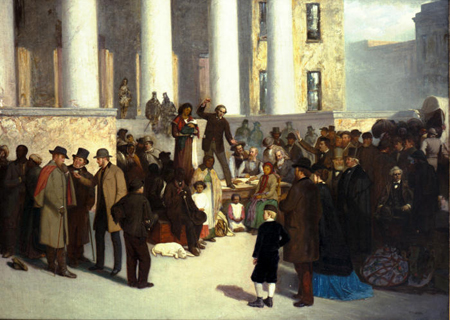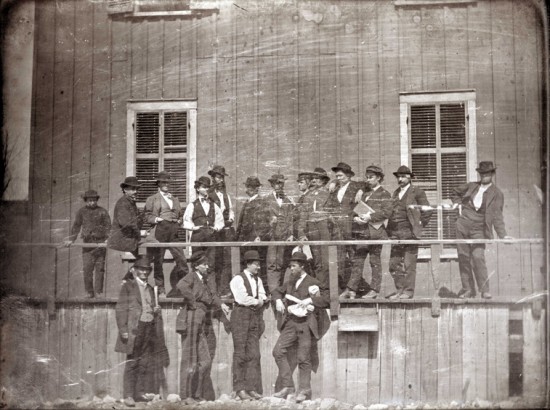
In the antebellum period of St. Louis, slave trading was a horrific occupation that was hidden in this city. According to the writer Frederic Bancroft, St. Louis was the home of nearly 30 slave-trading firms. The trading of enslaved people started mainly in the early 19th century and grew by the mid-century. One of the main slave traders was Bernard M. Lynch, whose slave pen was a key landmark in the final days of selling enslaved people and in the first days of the Civil War.
From the resources available on Bernard M. Lynch, it was a little challenging to find information about him. While looking at the federal censuses of 1850 and 1860, I learned that he was born either in 1810 or 1814 in Maryland. Sometime in 1849 he took over another slave-trading firm, named White and Tooley, which was located at 104 Locust, according to a newspaper advertisement in 1848. Lynch advertised his slave market in the early 1850s at the same location.

Lynch's Slave Market, 104 Locust Street, 1852, by Thomas Martin Easterly.
After looking through several city directories and receipts from 1848 to 1861 and a few advertisements in the newspaper, I found Lynch listed at four locations. He was first located at 104 Locust from 1849 to 1852, then on Franklin Avenue between 14th and 15th streets around 1855, followed by 100 Locust from 1857 to 1860. He bought the slave pen at Fifth and Myrtle streets (now Broadway and Clark) in 1859.

An etching of a slave sale appeared in “Wild Sports in the Far West,” an account of the travels of German writer Friederich Gerstaecker, who walked from St. Louis through Arkansas to Louisiana in 1838. It appears in Rose Nolen’s book.
Galusha Anderson, a young pastor at Second Baptist Church, wrote his memoir A Border City in the Civil War about his tour of the city and the slave market in 1859. A group of ministers from the east came to St. Louis and toured with Rev. Anderson. First, they visited the Mercantile Library, the place for people to gather for intellectual discussions at that time. Later they went to Lynch’s market on Locust and described the horrid conditions of the slaves. Anderson wrote that he would look out from his pulpit and see the business during his sermons. The ministers also went to the slave pen at Fifth and Myrtle and described the auctioning off of young slave children, including a mulatto girl about 16 years old. She was likely an illegitimate child of an unnamed senator and a black female slave.

Lynch held on to the slave pen until the Union army took over on September 3, 1861. He left St. Louis and joined the Confederacy. The Union army immediately turned it into a military prison for Confederate sympathizers. Ironically one of the prisoners was Max McDowell, a son of Dr. Joseph McDowell, whose medical college was obtained by the Union and turned into the Gratiot Street Prison.

Little is known about Bernard M. Lynch during the rest of the Civil War and afterward. One book on Missouri history stated that he was last living in Louisiana around 1894. The federal census from 1880 listed a B. M. Lynch that lived in New Orleans with a young wife. It stated that he was born in Maryland and was 50 years old. This could be him, but the 1860 census listed his age as 46.
After the war Richardson Drug Company owned the former slave pen. It was damaged in the Great Southern Hotel Fire of 1877 and eventually was bought by the Meyer Brothers Drug Company in 1895. They seem to have used this building more as storage, because their headquarters was at 217 S. 4th Street. In 1963 an article in the St. Louis Post-Dispatch noted the derelict condition of the building and the plan for Meyer Brothers to move to Macklind Avenue. The holding cells had not been not used since the Civil War. The building was demolished in the 1960s to make space for Busch Stadium and ended another link to slavery in St. Louis.
—Leo Thomasson, MHM Library volunteer [http://www.historyhappenshere.org/node/693]


No comments:
Post a Comment